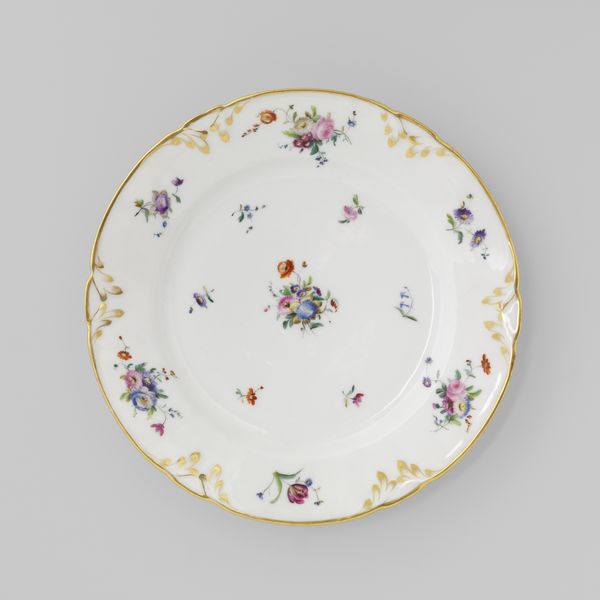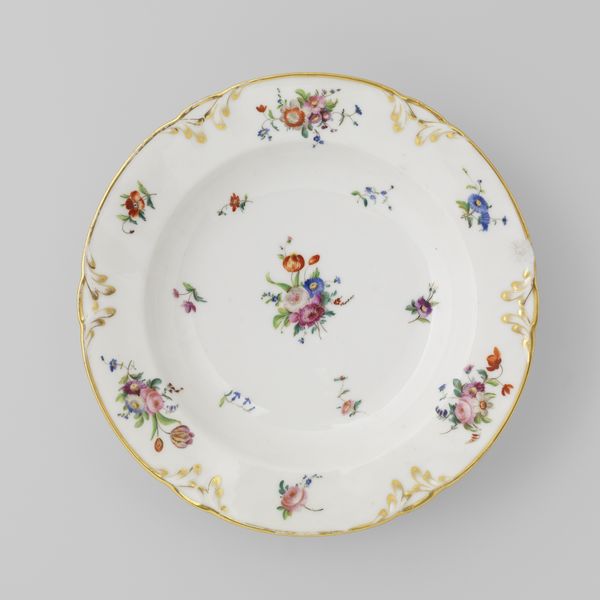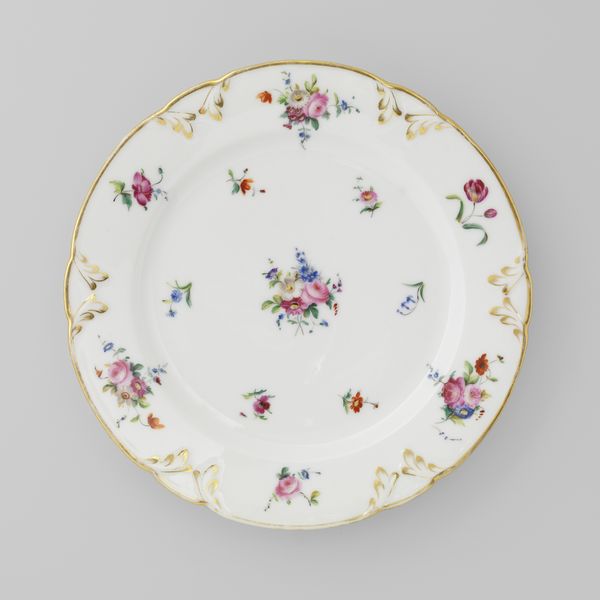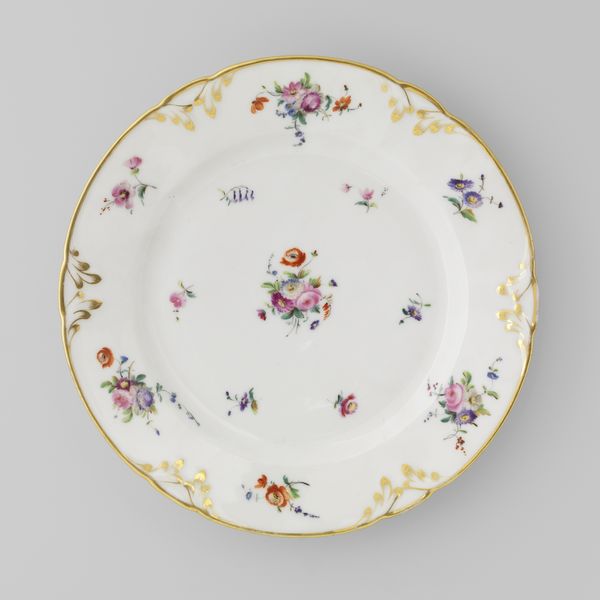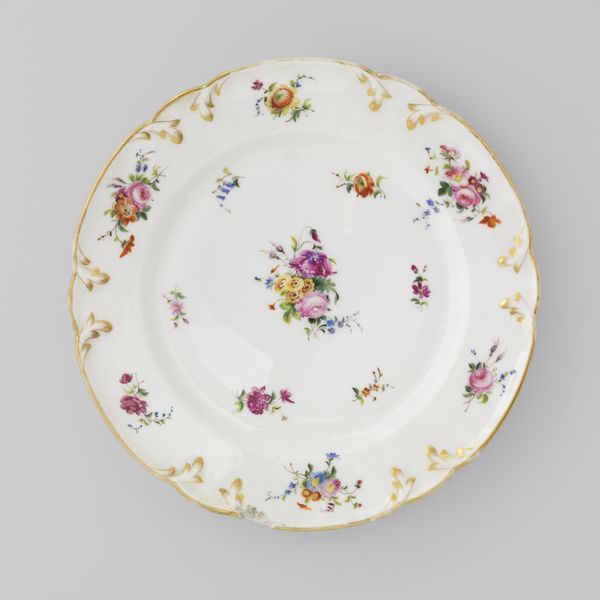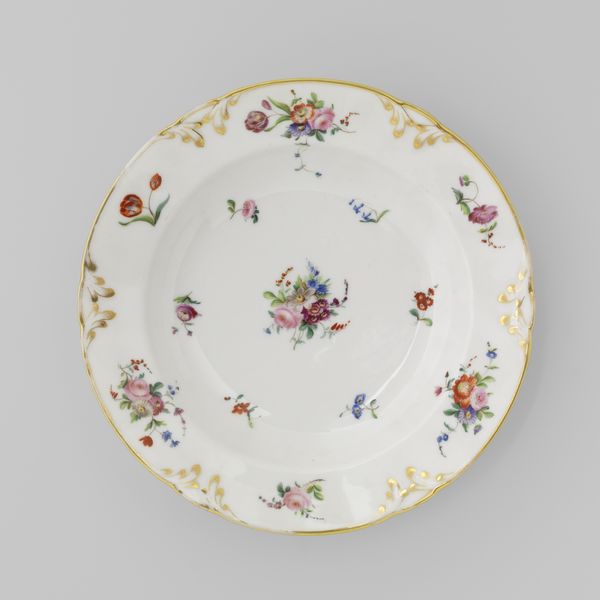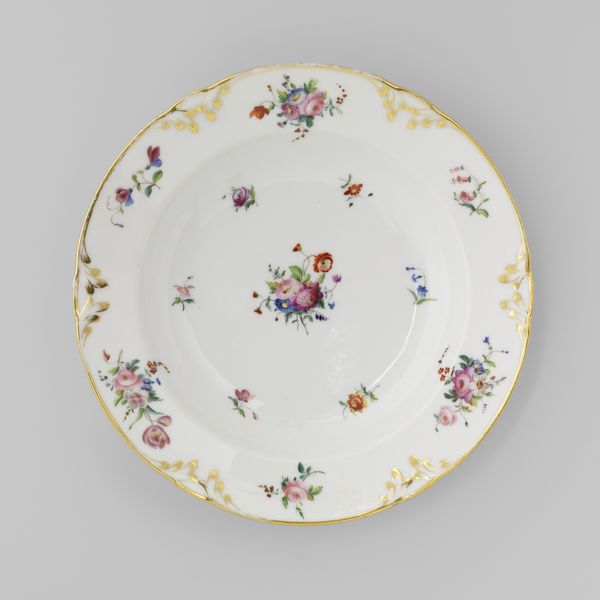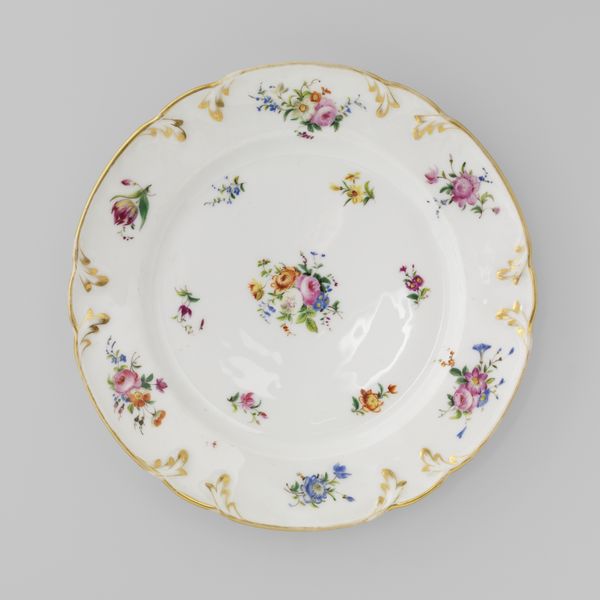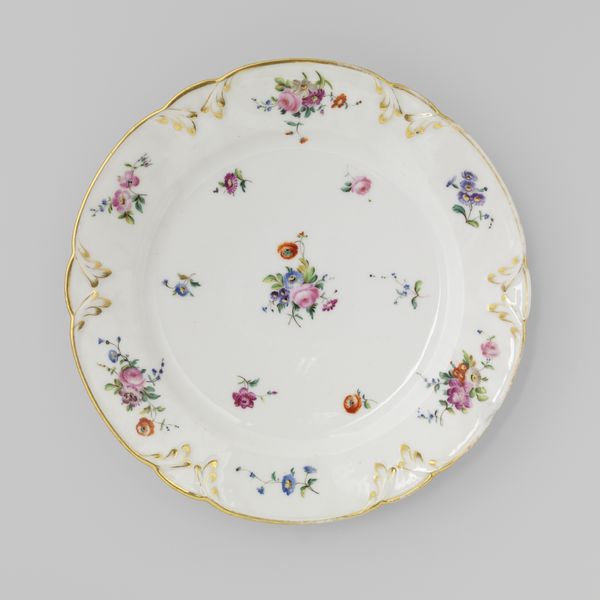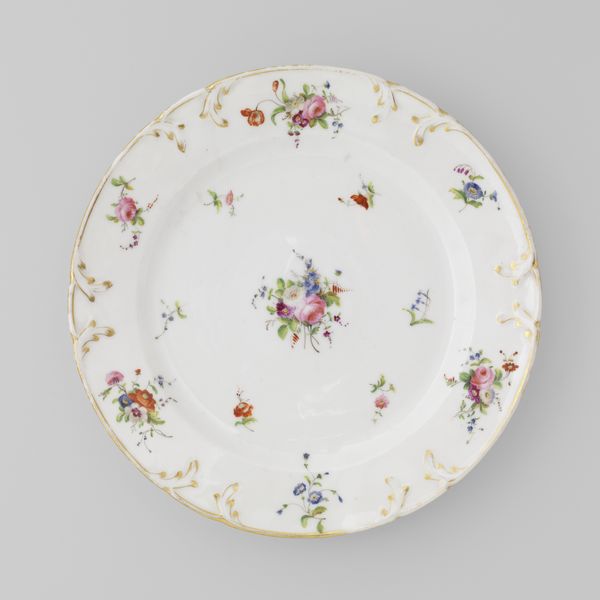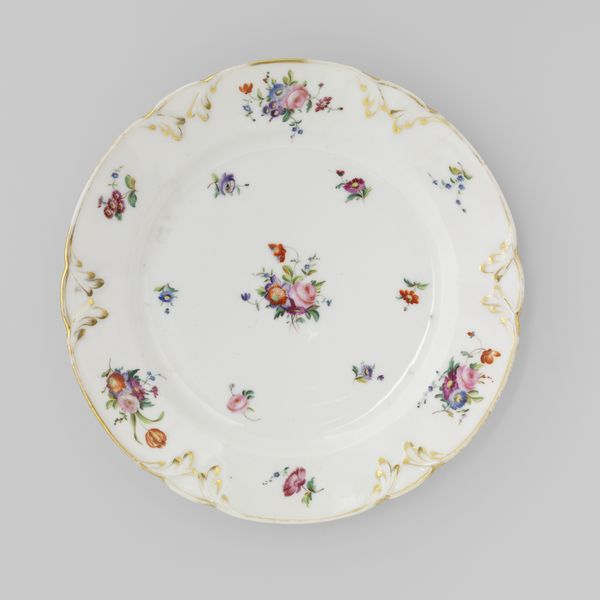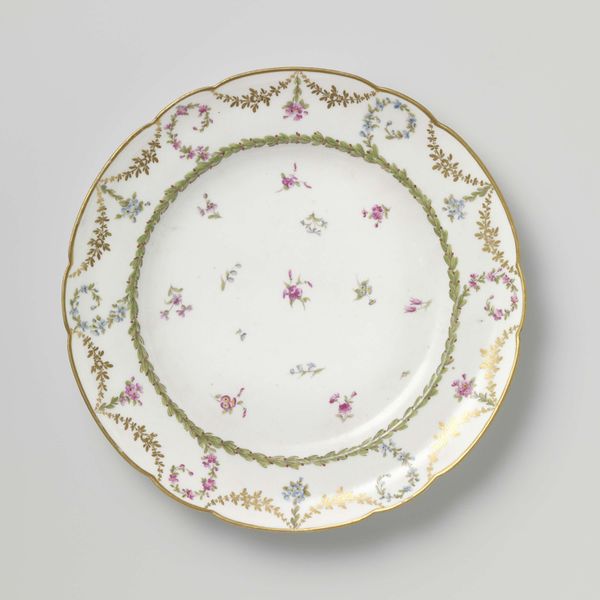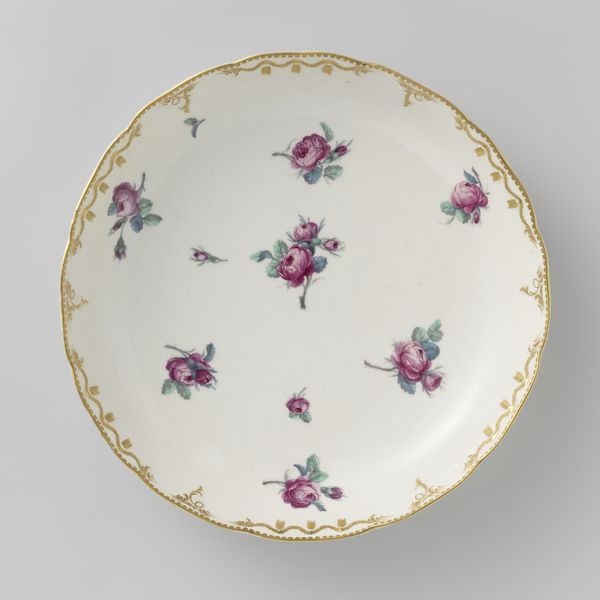
#
product photograph merchandise
#
product studio photography
#
circular oval feature
#
product promotion photography
#
cake food
#
product fashion photography
#
round design
#
retro 'vintage design
#
culinary art
#
food illustration
Dimensions: height 3 cm, diameter 24.6 cm, diameter 15.7 cm
Copyright: Rijks Museum: Open Domain
Curator: Here we have a "Plate with bouquets and flower sprays," dating from around 1839, produced by Fabriek Dominique Denuelle. It's currently held at the Rijksmuseum. Editor: My initial impression is one of restrained elegance. The floral designs scattered across the plate are charming, but there’s also a subtle, almost melancholic quality. It feels quite formal. Curator: Indeed. Let’s consider the production context. This was during a time of rising industrialization but also a clinging to older craft traditions. These plates weren’t merely functional; they represented status and taste. Someone took the time to create and purchase these plates. Editor: So the material tells a story. The porcelain itself speaks to technological advancements allowing for finer, more delicate ceramics. Was Denuelle aiming for the mass market or a more exclusive clientele? How accessible were these types of luxury wares, and how did access shift the definition of wealth? Curator: Denuelle was a factory known for producing luxury porcelain. Therefore, the plate would’ve been bought only by individuals from higher social classes and probably showcased rather than used daily. The imagery too, flowers of various species deliberately chosen for what they signify—love, remembrance, beauty. Editor: Precisely! The individual floral arrangements scattered around the surface have symbolic significance in relation to their context. Consumption was evolving in this period, too, and plates were bought for purposes more complex than pure function. I imagine this adorning a mantle rather than in a dining setting. Curator: Absolutely. Also, note the delicate gilt edging, clearly applied by hand after the firing. The juxtaposition of industrial manufacturing with artisan detailing highlights the changing dynamics of production during the 19th century. Editor: It certainly encourages you to think about labor—both the specialized artistic labor to make it as well as the conditions. Thinking about the life it might have had on display at home in an era of Empire and changing social mores offers us insights into social aspiration and its expression via aesthetic forms. Curator: It makes me want to research more about these objects within a home, their presence in the household, and who were the people creating them. Editor: Agreed, a beautiful but quiet, compelling artefact!
Comments
No comments
Be the first to comment and join the conversation on the ultimate creative platform.
